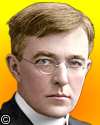
On 31 Jan 1881, Irving Langmuir was born, an American physical chemist who was awarded the 1932 Nobel Prize for Chemistry. In the Jun 1941 issue of Boys’ Life, Langmuir was featured to tell the Boy Scouts of America readers the value of summer jobs. Also of interest are his biographical remarks of his own boyhood experiences that contributed to his abilities as a research scientist and led to winning a Nobel Prize. Likewise, he also describes what drives his assistant, and gives him outstanding qualities. In the present, his message not only remains true, but is perhaps more urgent. Motivated students can still be recommended to seek a summer job that will challenge their intellectual development. Information students get by themselves is enormously more valuable than that which is taught to them in school. Students need opportunities—outside of school—to research, inquire, reason, get hands-on, explore, be curious and explain the phenomena around them. Students who succeed in these pursuits are the most likely to become the future research scientists and engineers. Teachers may wish to share this article on Irving Langmuir with their students, both boys and girls.
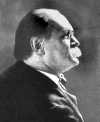
On 31 Jan 1841, Sam Loyd was born, American puzzlemaker whose prolific output includes the famous “15” puzzle - a square tray tray containing 15 square tiles and one space that allows the tiles to be rearranged into a given pattern. Today's book pick is: , by , editted by Martin Gardner (author of the ‘Mathematical Games’ column in Scientific American), who describes Loyd as “America's greatest puzzlist and an authentic American genius.” This book contains a selection of thought-provoking problems and puzzles from Loyd's Cyclopedia in arithmetic, algebra, speed and distance problems, game theory, counter and sliding block problems.
It is available from Amazon, typically about (As of earlier time of writing - subject to change.)
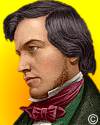 | There are few substances to which it [iron] yields in interest, when it is considered how very intimately the knowledge and properties and uses is connected with human civilization. |
 | Train yourselves. Don’t wait to be fed knowledge out of a book. Get out and seek it. Make explorations. Do your own research work. Train your hands and your mind. Become curious. Invent your own problems and solve them. You can see things going on all about you. Inquire into them. Seek out answers to your own questions. There are many phenomena going on in nature the explanation of which cannot be found in books. Find out why these phenomena take place. Information a boy gets by himself is enormously more valuable than that which is taught to him in school. |
| Before you look at today's web page, see if you can answer some of these questions about the events that happened on this day. Some of the names are very familiar. Others will likely stump you. Tickle your curiosity with these questions, then check your answers on today's web page. | |
| Births | |
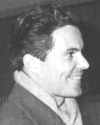 | Rudolf Ludwig Mössbauer, born 31 Jan 1929, is a German physicist and co-winner of the Nobel Prize for Physics in 1961 for his researches on the Mössbauer effect which concerns certain emissions from nuclei of radioactive isotopes. With what type of emissions is the Mössbauer effect concerned? |
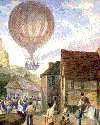 | Charles Green, born 31 Jan 1785, was an English balloonist whose outstanding achievement was his flight with two companions in 1836 from Vauxhall Gardens, London, to Weilburg, Germany, a distance of 480 miles. Green’s 18-hour trip set a long-distance balloon record for flights from England not beaten for many years Until what decade did the 1836 record remain unbroken for balloon flights from England? |
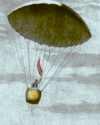 | On 31 Jan 1769, André-Jacques Garnerin was born, a French aeronaut who was the first person to use a parachute regularly and successfully. For his first jump, at age 28, he dropped from a hot-air balloon at 3000 feet. His parachute was semi-rigid, somewhat resembling an umbrella, and it shook back and forth violently during the fall. What design change was needed to provide a smoother descent? |
| Deaths | |
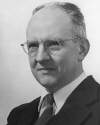 | Dirk Brouwer (1902-1966) was a Dutch-American astronomer and geophysicist known for his achievements in celestial mechanics, especially for his pioneering application of high-speed digital computers for astronomical computations. While still a student he determined the mass of Titan from its influence on other moons of its planet. Titan is a moon of which planet? |
| Events | |
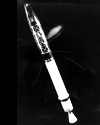 | On 31 Jan 1958, the United States entered the space age by launching the first successful orbiting satellite, four months after the Soviet launch of Sputnik. It measured cosmic radiation, and led to the discovery of the Van Allen radiation belt. What was the name of this first successful American satellite to enter Earth orbit? |
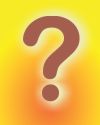 | On 31 Jan 1961, the U.S. launched a Mercury-Redstone 2 rocket into suborbital flight carrying a certain animal to test the capabilities of the Mercury capsule. It was retrieved safely, and the American space program was one step closer to the launch of Alan Shepard, the first Mercury astronaut. What animal was used in the American Jan 1961 suborbital flight test? |
Fast answers for the previous newsletter for January 30: yellow fever • computer mouse • transistor • Kitty Hawk, for 12 seconds • cyanoacrylate-based glue such as Crazy Glue. • Variation of Animals and Plants under Domestication • lifeboat.
 If you enjoy this newsletter, the website, or wish to offer encouragement or ideas, please send feedback by using your mail reader Reply button.
If you enjoy this newsletter, the website, or wish to offer encouragement or ideas, please send feedback by using your mail reader Reply button. Your click on a Facebook, StumbleUpon, or other social button on the site webpages is also a welcome sign of appreciation. Thank you for using them.
© This newsletter is copyright 2020 by todayinsci.com. Please respect the Webmaster's wishes and do not put copies online of the Newsletter — or any Today in Science History webpage. (If you already have done so, please remove them. Thank you.) Offline use in education is encouraged such as a printout on a bulletin board, or projected for classroom viewing. Online, descriptive links to our pages are welcomed, as these will provide a reader with the most recent revisions, additions and/or corrections of a webpage. For any other copyright questions, please contact the Webmaster by using your mail reader Reply button.
--
If you do not want to receive any more newsletters, Unsubscribe
To update your preferences and to unsubscribe visit this link
Executive Real Estate Business Class
-
"It was like a man with wings. It wasn't like anything you'd see on TV or in a monster movie." ...
About the publisher
Search This Blog
Blog Archive
-
▼
2021
(585)
-
▼
January
(109)
- Ian Kershaw on why Hitler declared war on America
- On This Day for January 31 - Guy Fawkes executed i...
- Newsletter for Sunday 31 January.
- January 31: Slavery Abolished in the USA, Guy Fawk...
- On This Day for January 30 - “Great Soul” assassin...
- Newsletter for Saturday 30 January.
- January 30: Oliver Cromwell Ritually Executed, Mah...
- On This Day for January 29 - Iraq, Iran, and North...
- Newsletter for Friday 29 January.
- January 29: Romeo and Juliet, Coca-Cola and the Se...
- 'The Food That Built America' Is Back!
- On This Day for January 28 - Explosion of the spac...
- Newsletter for Thursday 28 January.
- Inside The Still-Mysterious Circumstances Of Heath...
- Demystified: What’s the Difference Between a Presi...
- On This Day for January 27 - Vietnam War ended, Wo...
- Newsletter for Wednesday 27 January.
- January 27: Kaiser Bill is Born, the Siege of Leni...
- You are now unsubscribed
- What The Wild West Actually Looked Like in 48 Reve...
- New Savings! $50 off Family Memberships
- On This Day for January 26 - First European settle...
- Newsletter for Tuesday 26 January.
- January 26: Catholic Counter-Reformation, British ...
- On This Day for January 25 - Claudius affirmed as ...
- Newsletter for Monday 25 January.
- January 25: São Paulo Founded, Charles Wilkes Disc...
- Queen Victoria and Prince Albert's marriage | Wors...
- On This Day for January 24 - Opportunity's Mars la...
- Newsletter for Sunday 24 January.
- January 24: Scouting for Boys, Apple's Macintosh a...
- On This Day for January 23 - Madeleine Albright sw...
- See All That's Interesting Most Popular Articles
- Please Confirm Subscription To Our Newsletter
- The "Alaskan Avenger" Who Attacked Sex Offenders W...
- On This Day for January 22 - Roe v. Wade ruling, L...
- Newsletter for Friday 22 January.
- On This Day for January 21 - First commercial Conc...
- Newsletter for Thursday 21 January.
- Need Context with Your News?
- Demystified: Where Do Honeybees Go in the Winter?
- On This Day for January 20 - Barack Obama sworn in...
- Newsletter for Wednesday 20 January.
- On This Day for January 19 - Rule in India transfe...
- Newsletter for Tuesday 19 January.
- On This Day for January 18 - German Empire establi...
- Newsletter for Monday 18 January.
- January 18: King of Siam Kills the Crown Prince of...
- Queen Victoria and Prince Albert: was their union ...
- On This Day for January 17 - Hawaiian monarchy ove...
- Newsletter for Sunday 17 January.
- January 17: US-Modoc War, the UN Security Council ...
- On This Day for January 16 - Beginning of Persian ...
- Newsletter for Saturday 16 January.
- January 16: Ivan the Terrible, Louis XVI's Death S...
- The Tragedy Of David Reimer, The Boy Forced To Liv...
- On This Day for January 15 - British Museum opened...
- Newsletter for Friday 15 January.
- January 15: Henry VIII and the Church of England, ...
- On This Day for January 14 - Premiere of Giacomo P...
- Newsletter for Thursday 14 January.
- January 14: The Dutch Conquer Malacca, the US Revo...
- Demystified: Why Does Water Freeze from the Top Down?
- On This Day for January 13 - Émile Zola's “J'accus...
- Newsletter for Wednesday 13 January.
- January 13: 1st Issue of "The Times" of London, Ch...
- On This Day for January 12 - Haiti severely damage...
- Newsletter for Tuesday 12 January.
- January 12: A Day of Coronation, Gandhi's Last Fas...
- On This Day for January 11 - Amelia Earhart's Hawa...
- Newsletter for Monday 11 January.
- January 11: Spices, Morse Code, Insulin and 55 Yea...
- The real history behind Bridgerton
- On This Day for January 10 - Common Sense publishe...
- Newsletter for Sunday 10 January.
- January 10: Thomas Paine Publishes Common Sense, T...
- On This Day for January 9 - Election of Mahmoud Ab...
- THE IGBO LANDING - HOW THEY COMMITTED SUICIDE
- Newsletter for Saturday 9 January.
- January 9: Joan of Arc's Trial, the Daguerreotype ...
- The Biggest Historical Discoveries From 2020 And M...
- On This Day for January 8 - Anniversary of Grimald...
- Newsletter for Friday 8 January.
- January 8: US National Debt Briefly Hits $0, Forma...
- On This Day for January 7 - Galileo's discovery of...
- Newsletter for Thursday 7 January.
- January 7: A Day of Invention - The Typewriter, Hy...
- On This Day for January 6 - Epiphany, Richard II i...
- Newsletter for Wednesday 6 January.
- January 6: Charles I put on Trial for Treason, FDR...
- Meet The Real-Life Goodfellas Whose True Stories W...
- On This Day for January 5 - Golden Gate Bridge con...
- Newsletter for Tuesday 5 January.
- January 5: Richmond Burns, The Nazi Party Forms, A...
- Last Call for 30% off Memberships
- On This Day for January 4 - Burma granted independ...
- Newsletter for Monday 4 January.
- January 4: The Colt Revolver, a 33 Year Strike and...
- Dangers of Victorian London| Roman history quiz | ...
- On This Day for January 3 - Martin Luther excommun...
-
▼
January
(109)
-
Blogroll
-
About
HistoryFact










0 comments:
Post a Comment